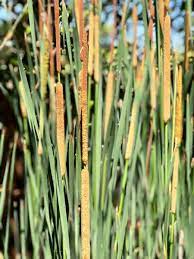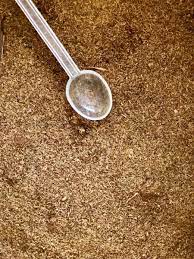 Midway down the garden path of ACTCM, you will pass by our very own little wetland pond. Growing out of its shallow waters are many reeds, regal and yet somewhat resembling corn-dogs on skewers.
Midway down the garden path of ACTCM, you will pass by our very own little wetland pond. Growing out of its shallow waters are many reeds, regal and yet somewhat resembling corn-dogs on skewers.
Having spent my earliest childhood years wandering the watery marshes of Central California in search of crayfish and tadpoles to take home as clandestine pets, I feel an uncanny affinity in their presence.
From this peculiar yet familiar plant commonly known as Cattails or Bulrushes, we derive the Chinese herb Pu Huang (Typha angustifolia pollen) – the yellow pollen that stops bleeding, invigorates the blood, and dispels blood stasis.
It is adaptive to aid both external traumas, and various forms of internal bleeding. Like many other herbs in our pharmacopeia that grow in or near water, it has the ability to promote urination, which is helpful in cases of urinary bleeding since both actions aid in healing.
 The elegance of Pu Huang is best summed up in the Commentary of the herb mentioned in Chinese Herbal Medicine Materia Medica (Bensky, Clavey, Stoger, Eastland Press, 2015)
The elegance of Pu Huang is best summed up in the Commentary of the herb mentioned in Chinese Herbal Medicine Materia Medica (Bensky, Clavey, Stoger, Eastland Press, 2015)
“Because it is sweet, and neither warming nor cooling, it harmoniously removes blood stasis and stops bleeding while also promoting urination. It is one of the herbs that stops bleeding without leaving foci for subsequent blood stasis.”
A Plant of Infinite Usefulness
The powdery pollen appears this time of the year (mid-Summer), before the flowerheads yield their downy seed which has been known to fill household pillows, and incidentally, life vests and seat cushions of tanks and airplanes during World War II.
These plants have been long used as a medicine, vital food-source, native building material, insect-repelling candle, fluff for tinder, as well as in the production of basketry, paper, and rayon by many people throughout the Northern Hemisphere.
The plant in its association with rain and water, was a symbolic element in Rain Dances of Pueblo people. Most parts of the plant including the flowerhead, seeds, shoots, and roots were eaten at differing times of the year, and sometimes meant the difference between survival and death.
The Cattail as Alchemist
Cattails have an interesting ability to transform the water from which they grow. They greatly reduce levels of arsenic from groundwater and wetlands, regarding what would be poison to us, as a welcomed nutrient.
This seems especially pertinent in an era when methods of bio and phytoremediation are becoming more crucially needed. Constructed wetlands of cattails are being utilized as a method of water filtration by some in permaculture.
The plants have also been shown to lessen levels of cadmium, lead, zinc, and copper from agricultural runoff waters. This said, it is best to avoid harvesting the plants that are grown for this purpose in polluted regions, as they retain the toxins they have been filtering.
As the contemporary applications of Cattails continue to unfold with the unfolding reality of modernity, let us thank this plant for its many healing, nourishing, and protective gifts, among them being the wonderful yellow pollen we call Pu Huang.
Click here to view upcoming ACTCM events.
About American College of Traditional Chinese Medicine
American College of Traditional Chinese Medicine (ACTCM) has provided affordable, quality health care to the public and trained professionals in acupuncture, massage and Chinese medicine since 1980. In addition to its graduate curriculum, ACTCM offers continuing education, public education, community outreach and clinical services in acupuncture and herbal medicine. ACTCM has been the recipient of many awards for its curriculum, faculty and clinic, and has been voted “Best of the Bay” by both the San Francisco Weekly and the San Francisco Bay Guardian. ACTCM is accredited by the Accreditation Commission for Acupuncture and Oriental Medicine and is a private, nonprofit, 501(c)(3) tax-exempt organization